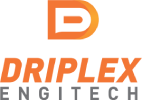Dry Break or Dry Disconnect couplings are quick connect disconnect couplings with an inbuilt NRV. They reduce the chances of leakages and help in saving service media. To top it all they also help protect the environment and the personnel around. Typically, these couplings are used within Oil and Chemical sectors industry. Operations with a lot of repetition, hazardous chemicals or expensive service media benefit most from this technology. The reasons for choosing Driplex Dry Break or Dry Disconnect Couplings are numerous but most users regard the removal of leakages after the operation is over as the primary product advantage. This is because the couplings are frequently used for the transfer of hazardous chemicals where spillage or release volumes are critical.
The more frequently hoses/loading arms to be connected and disconnected, the more valuable Dry Break application is. These couplings reduce losses and enhance safety. Both the halves of Dry Break couplings are sealed against fluid loss by built-in pistons. Driplex Couplings all operate on the same basic principle, in which an initial turn of 15° locks the Couplings halves together and brings the two pistons in contact with each other. The coupling consists of two halves, each with an integral isolation valve. This means, when disconnected the two halves remain closed, restricting the amount of hazardous liquid that can escape.
Another popular application in the downstream industry during rig transfer of chemical additives such as corrosion and scale inhibitors. These fluids are normally taken to rig in intermediate bulk containers (IBC) and connected to the rig feed systems by 3 inch or 4 inch Driplex Dry break Coupling in 316L stainless steel.
Accidental leakages and accidents are not favoured for any applications but the downstream industry where there is a strict regulatory need of environmental protection Driplex Dry Break Couplings are a norm in the industry now.


Post a comment